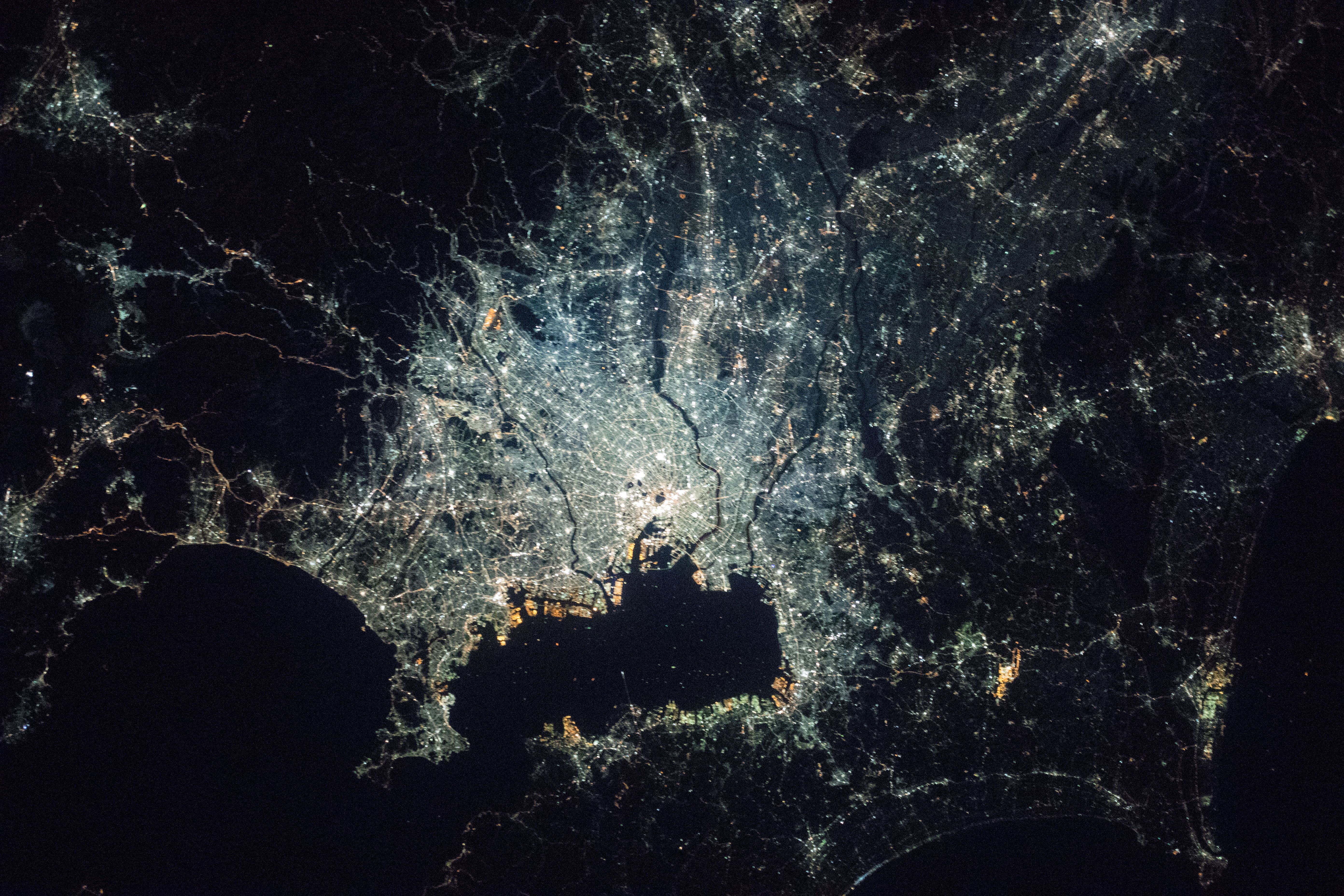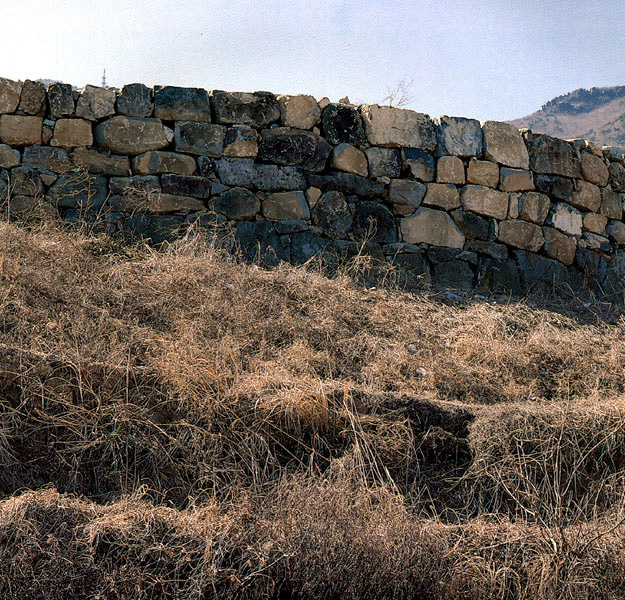|
Busan–Gyeongnam Area
Busan–Gyeongnam Area, also known as Pusan–Kyŏngnam (PK) is the metropolitan area of Busan, Ulsan, and Gyeongsangnam-do (Gyeongnam) located in southeast South Korea. History Until 1963, before Busan become a "List of special cities of South Korea, Directly Governed City", the whole area formed the Gyeongsangnam-do. Economy Population PK has a population of 7,584,435, as of 2010. It is the second most populated metropolitan area after the Seoul Metropolitan Area. Administrative districts Metropolitan cities *Busan *Ulsan South Gyeongsang Province *Changwon *Yangsan *Gimhae *Jinju *Sacheon *Miryang *Geoje *Tongyeong See also *List of metropolitan areas by population *Seoul Capital Area *Southeastern Maritime Industrial Region References Busan–Gyeongnam Area, {{SouthKorea-geo-stub ... [...More Info...] [...Related Items...] OR: [Wikipedia] [Google] [Baidu] |
Metropolitan Area
A metropolitan area or metro is a region consisting of a densely populated urban area, urban agglomeration and its surrounding territories which share Industry (economics), industries, commercial areas, Transport infrastructure, transport network, infrastructures and housing. A metropolitan area usually comprises multiple Principal city, principal cities, jurisdictions and Municipality, municipalities: Neighbourhood, neighborhoods, townships, boroughs, City, cities, towns, exurbs, suburbs, County, counties, districts and even State (polity), states and nations in areas like the eurodistricts. As social, economic and political institutions have changed, metropolitan areas have become key economic and political regions.In the United States, metropolitan areas are delineated around the Urban Area, core of a core based statistical area, which is defined as an urban area and includes central and outlying counties. In other countries metropolitan areas are sometimes anchored by one Core ... [...More Info...] [...Related Items...] OR: [Wikipedia] [Google] [Baidu] |
Seoul Metropolitan Area
The Seoul Metropolitan Area (Sudogwon; , ) or Gyeonggi (region), Gyeonggi region (), is the metropolitan area of Seoul, Incheon, and Gyeonggi Province, located in north-western South Korea. Its population of 26 million (as of 2024) is ranked as the List of largest cities#List, fourth-largest metropolitan area in the world. Its area is about . It forms the cultural, commercial, financial, industrial, and residential center of South Korea. The largest city is Seoul, with a population of approximately 10 million people, followed by Incheon, with three million inhabitants. Geography and climate The Metropolitan Area occupies a plain in the Han River (Korea), Han River valley. History Demographics Covering only about 12% of the country's area, the Seoul Metropolitan Area is home to more than 48.2% of the national population, and is the world's List of largest cities#List, ninth-largest urban area. This percentage has risen steadily since the mid-20th century, and the tre ... [...More Info...] [...Related Items...] OR: [Wikipedia] [Google] [Baidu] |
List Of Metropolitan Areas By Population
The United Nations uses three definitions for what constitutes a city, as not all cities in all jurisdictions are classified using the same criteria. Cities may be defined as the cities proper, the extent of their urban area, or their metropolitan regions. Definitions City proper (administrative) A city can be defined by its administrative boundaries, otherwise known as city proper. UNICEF defines city proper as, "the population living within the administrative boundaries of a city or controlled directly from the city by a single authority." A city proper is a locality defined according to legal or political boundaries and an administratively recognised urban status that is usually characterised by some form of local government. Cities proper and their boundaries and population data may not include suburbs. The use of city proper as defined by administrative boundaries may not include suburban areas where an important proportion of the population working or studying in t ... [...More Info...] [...Related Items...] OR: [Wikipedia] [Google] [Baidu] |
Tongyeong
Tongyeong (; ) is a coastal Administrative divisions of South Korea, city in South Gyeongsang Province, South Korea. It has an area of and in 2010, a population of 139,869 people. It is divided into 1 eup (town), 6 myeon (township) and 11 dong (neighborhood). Chungmu city and Tongyeong county were reunited in 1995, creating Tongyeong as it is known today. It consists of Goseong County, South Gyeongsang, Goseong Peninsula, Hansando, , and other islets. It was formerly known as Chungmu, after the posthumous name of Admiral Yi Sun-sin. The name Tongyeong means "command post" and is itself associated with Admiral Yi, as it refers to his principal base that was located on nearby Hansan Island. Notable people Notable people associated with the city include Yi Sun-sin, whose headquarters were located there, and Yun Isang, a noted 20th-century composer. Chungmu Halmae, or "Chungmu Grandmother", is a mythical old woman from Chungmu who gave her name to Chungmu Halmae Kimbap, a common Kor ... [...More Info...] [...Related Items...] OR: [Wikipedia] [Google] [Baidu] |
Geoje
Geoje (; ) is a Administrative divisions of South Korea, city located in South Gyeongsang Province, South Korea. It is located near Busan. Hanwha Ocean in Okpo and Samsung Heavy Industries (SHI) in Gohyeon are both located on Geoje Island. The city also offers a wide range of tourist sights. The city is made up of a number of islands, of which by far the largest is Geoje Island. There are multiple dong (neighbourhood), dong in the city: Jangpyeongdong, Okpo-dong and Gohyeon. Etymology Geoje is Korean language, Korean for "great rescue", from the syllables ''geo'' () meaning great, and ''je'' () meaning rescue. History Geoje has a history stretching back thousands of years. Various artifacts dating back to the Neolithic era have been found at archaeological digs on Naedo, Sandaldo, and Isudo. While no written history can be found from this era, the digs show evidence of numerous small establishments along the coasts. The first written mention of Geoje appears as, Geoje being one ... [...More Info...] [...Related Items...] OR: [Wikipedia] [Google] [Baidu] |
Miryang
Miryang () is a Administrative divisions of South Korea, city in South Gyeongsang Province, South Korea. Neighboring cities include Changnyeong to the west, Cheongdo to the north, Ulsan to the east, and Yangsan, Gimhae, and Changwon to the south. The city bird is the Korean magpie, the city tree is the pine, and the city flower is the royal azalea. The recorded history of Miryang begins in the Samhan period, when it was known as Mirimidongguk. Due to its strategic location near the Nakdong River, Miryang played an important role from the Silla period forward. It served as an important station on the Great Yeongnam Road during the later Joseon Dynasty, and in the 20th century it became a station on the Gyeongbu Line railroad that connects Busan to Seoul. Miryang remains a key stop along that line, and is now the only city between Busan and Daegu served by KTX express trains. Miryang is known around Korea for the Miryang ''arirang'' and for the view from the Yeongnamnu (Miryang), ... [...More Info...] [...Related Items...] OR: [Wikipedia] [Google] [Baidu] |
Sacheon
Sacheon (; ) is a Administrative divisions of South Korea, city in South Gyeongsang Province, South Korea. Sacheon's chief fame comes from its being the site of two naval battles in the Japanese invasions of Korea (1592–1598), Seven Year War. The city as it now exists results from the merging of Sacheon-gun and Samcheonpo-si in 1995. The northern part of the city is called Sacheon-eub and is located at the top of Sacheon Bay, near the city of Jinju. The southern part of the city is located in the old Samcheonpo-si, which is located at the mouth of Sacheon Bay. History During prehistoric times, the local area was very important for trade between the interior and coastal area. A large central settlement called the Igeum-dong site developed in the neighbourhood of the same name in Samcheonpo. This complex site was a major settlement, megalithic cemetery, and ceremonial area during the latter part of the Middle Mumun pottery period (c. 700-550 B.C.). Several islands that lie just o ... [...More Info...] [...Related Items...] OR: [Wikipedia] [Google] [Baidu] |
Jinju
Jinju (; ) is a city in South Gyeongsang Province, South Korea. It was the location of the first (1592) and second (1593) Sieges of Jinju by Japanese forces during the Imjin War. The Republic of Korea Air Force Education and Training Command is located in the eastern part of the city. There are cultural-historical tourist attractions in Jinju such as Jinju Fortress, the Jinju National Museum, and the Nam-gang Prehistoric Site Museum. History Jinju was an ancient city of Goryeonggaya in the Gaya Era. This city was called 'Geoyeolseong' of Baekje during the Three Kingdom Era, and was called 'Geoyeolju', 'Cheongju', and 'Gangju' during the Unified Silla Era. Name of this city was changed into 'Jinju' for the first time in 940, the 23rd year of King Taejo of the Goryeo Dynasty. It became 'Jinju-mok', one of 12 moks (local administrative units in Goryeo and Joseon Dynasty) in the 2nd year of King Seongjong (983). The second siege of Jinju during the Japanese invasion of ... [...More Info...] [...Related Items...] OR: [Wikipedia] [Google] [Baidu] |
Metropolitan Area
A metropolitan area or metro is a region consisting of a densely populated urban area, urban agglomeration and its surrounding territories which share Industry (economics), industries, commercial areas, Transport infrastructure, transport network, infrastructures and housing. A metropolitan area usually comprises multiple Principal city, principal cities, jurisdictions and Municipality, municipalities: Neighbourhood, neighborhoods, townships, boroughs, City, cities, towns, exurbs, suburbs, County, counties, districts and even State (polity), states and nations in areas like the eurodistricts. As social, economic and political institutions have changed, metropolitan areas have become key economic and political regions.In the United States, metropolitan areas are delineated around the Urban Area, core of a core based statistical area, which is defined as an urban area and includes central and outlying counties. In other countries metropolitan areas are sometimes anchored by one Core ... [...More Info...] [...Related Items...] OR: [Wikipedia] [Google] [Baidu] |
Busan
Busan (), officially Busan Metropolitan City, is South Korea's second list of cities in South Korea by population, most populous city after Seoul, with a population of over 3.3 million as of 2024. Formerly romanized as Pusan, it is the economic, cultural and educational center of southeastern South Korea, with its port being South Korea's busiest and the sixth-busiest in the world. The surrounding "Southeastern Maritime Industrial Region" (including Ulsan, South Gyeongsang Province, South Gyeongsang, Daegu, and part of North Gyeongsang Province, North Gyeongsang and South Jeolla Province, South Jeolla) is South Korea's largest industrial area. The large volumes of port traffic and urban population in excess of 1 million make Busan a Large-Port metropolis using the Southampton System of Port-City classification. As of 2019, Busan Port is the primary port in Korea and the world's sixth-largest container port. Busan is divided into 15 major administrative districts and a single co ... [...More Info...] [...Related Items...] OR: [Wikipedia] [Google] [Baidu] |
List Of Special Cities Of South Korea
Province-level cities are one of the Administrative divisions of South Korea, first-level administrative divisions within South Korea. There are three types: special, metropolitan, and special self-governing. Position in hierarchy and types Province-level cities have equal status to Provinces of South Korea, provinces in the South Korean administrative scheme, and are among the highest-ranked administrative divisions of South Korea. There are three kinds of first-level city in South Korea. * Seoul was designated a "special free city" (''teukbyeol jayusi''; ; ) separate from Gyeonggi Province on August 15, 1946; it became a "special metropolitan city" on August 15, 1949. * Metropolitan cities were called "direct control (meaning directly-administered) city" (''jikhalsi''; ; ) before 1995. Administration In South Korean special metropolitan city and metropolitan cities, the mayor is the highest-ranking official in charge. The mayor is directly elected by the people registered in ... [...More Info...] [...Related Items...] OR: [Wikipedia] [Google] [Baidu] |







